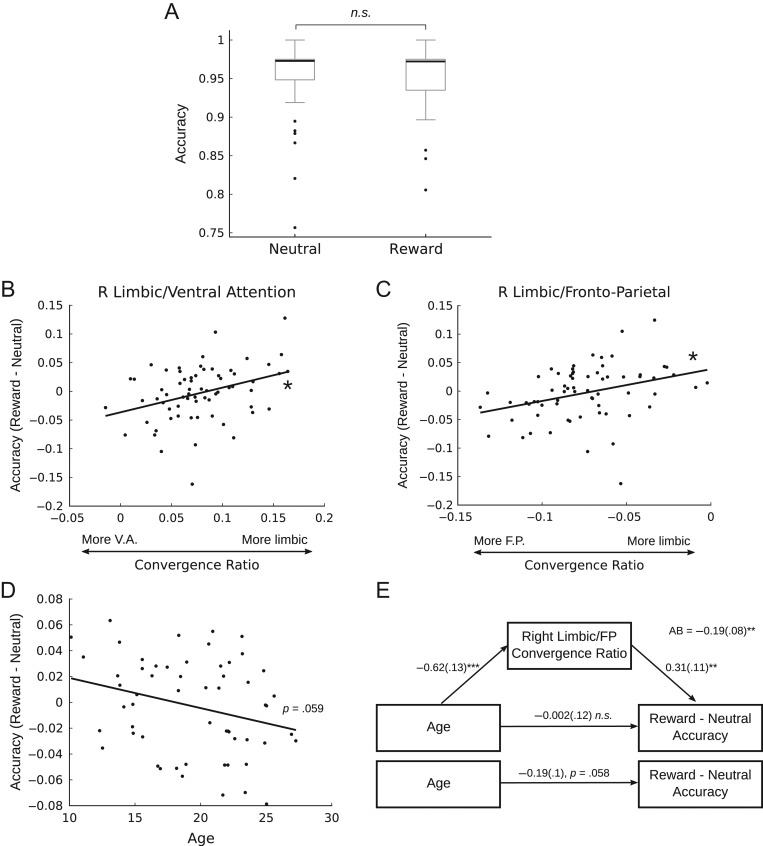Figure 4.
The influence of the convergence ratio on reward-driven behavior. Participants completed an antisaccade task as a measure of inhibitory control. In one condition, participants were cued that they would be rewarded for correct performance (reward), in the other there was no reward contingency (neutral). There was no difference in overall accuracy between conditions (A), however there was a significant positive association between the right limbic/ventral attention (B) and right limbic/fronto-parietal (C) convergent zones such that a more limbic convergence ratio was associated with greater improvement to performance with reward incentives. (D) Improvements to accuracy with reward incentives trended toward being greater earlier in adolescence and diminishing into adulthood (P = 0.059). (E) The right limbic/fronto-parietal convergence ratio significantly mediated the trend-level association between age and incentive-based improvements in inhibitory control performance.

